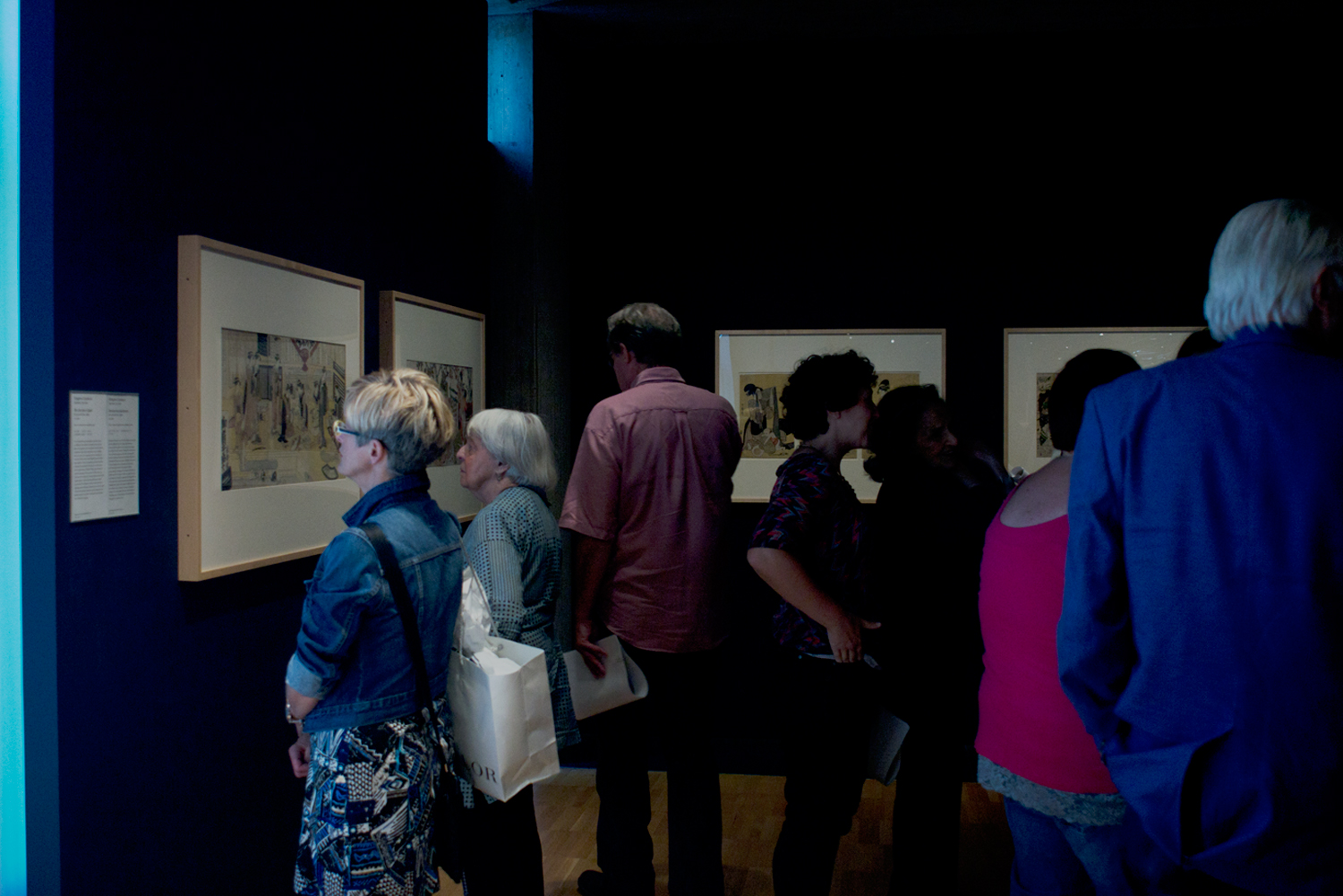
While most museums prohibit visitors from playing music inside exhibition spaces, the Yale University Art Gallery is enlisting the help of four musicians to help viewers understand the visual arts from a new perspective.
The Haven String Quartet hosted the second performance of their annual “Playing Images: An Exploration of Music and Art” concerts at the YUAG on Sunday. The concert focused on the theme of Impressionism, as audiences listened to a live performance of French composer Claude Debussy’s “String Quartet in G minor” while admiring the artwork from the period, which was hanging around the room. Jessica Sack, the YUAG’s associate curator of public education, said the combination of music and visual art would allow viewers to interpret paintings in novel ways.
“The audience is both listening and having conversations about these connections,” Sack said. “It allows time to slow down because we’re equally analyzing what we see and what we hear so when it’s performed in its entirety, you make these really deep connections.”
Yaira Matyakubova, violinist for the Haven String Quartet, said the concert was inspired by the question of whether a live musical accompaniment could change the way visual art was viewed. She explained that she thinks when a painting is surrounded by music, the piece is able to establish a connection with the viewer. Matyakubova noted that while there were only roughly 10 people at the first-ever Playing Images concert, the series has grown so popular that it draws more than 150 attendees between its two annual concerts.
Matyakubova explained no two concerts are ever the same because each performer plays with a unique style and each viewer gives different responses to the artistic themes represented in the music.
“One of my favorite parts of the concerts is being able to integrate comments from the first performance into our second performance,” said Annalisa Boerner, violist for the Haven String Quartet. “I thought it was satisfying because the art and music had so many connections, literally and figuratively.”
Past collaborations between the quartet and the gallery have highlighted African art and music and the work of contemporary Austrian composer Anton Webern. The process of selecting music and artwork for concerts is an extensive one, Matyakubova said. Sometimes the curator and the musicians would walk through the gallery to choose an artistic theme and then brainstorm which pieces of music would be most appropriate; at other times they would begin with a musical repertoire and then decide which pieces of art would fit into the program, she explained.
The Haven String Quartet is a part of Music Haven, a local organization that runs after-school arts programs for students in elementary and middle school. Wendy Marans, president of the Board of Directors of Music Haven, said the greater mission of the Haven String Quartet lies in community building through music. She highlighted that the group provides free access to quality music lessons in New Haven’s lower-income communities. As mentors to local children, Marans noted, the quartet members inspire students to participate in music ensembles outside of school, which helps to develop skills in teamwork that are applicable to areas outside of music.
The Haven String Quartet was founded in 2006 by Tina Lee Hadari MUS ’04.







